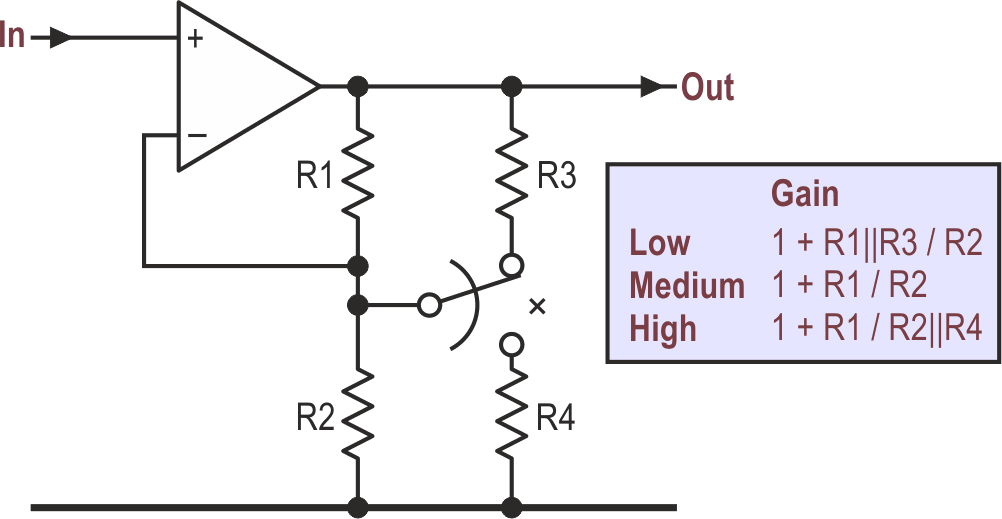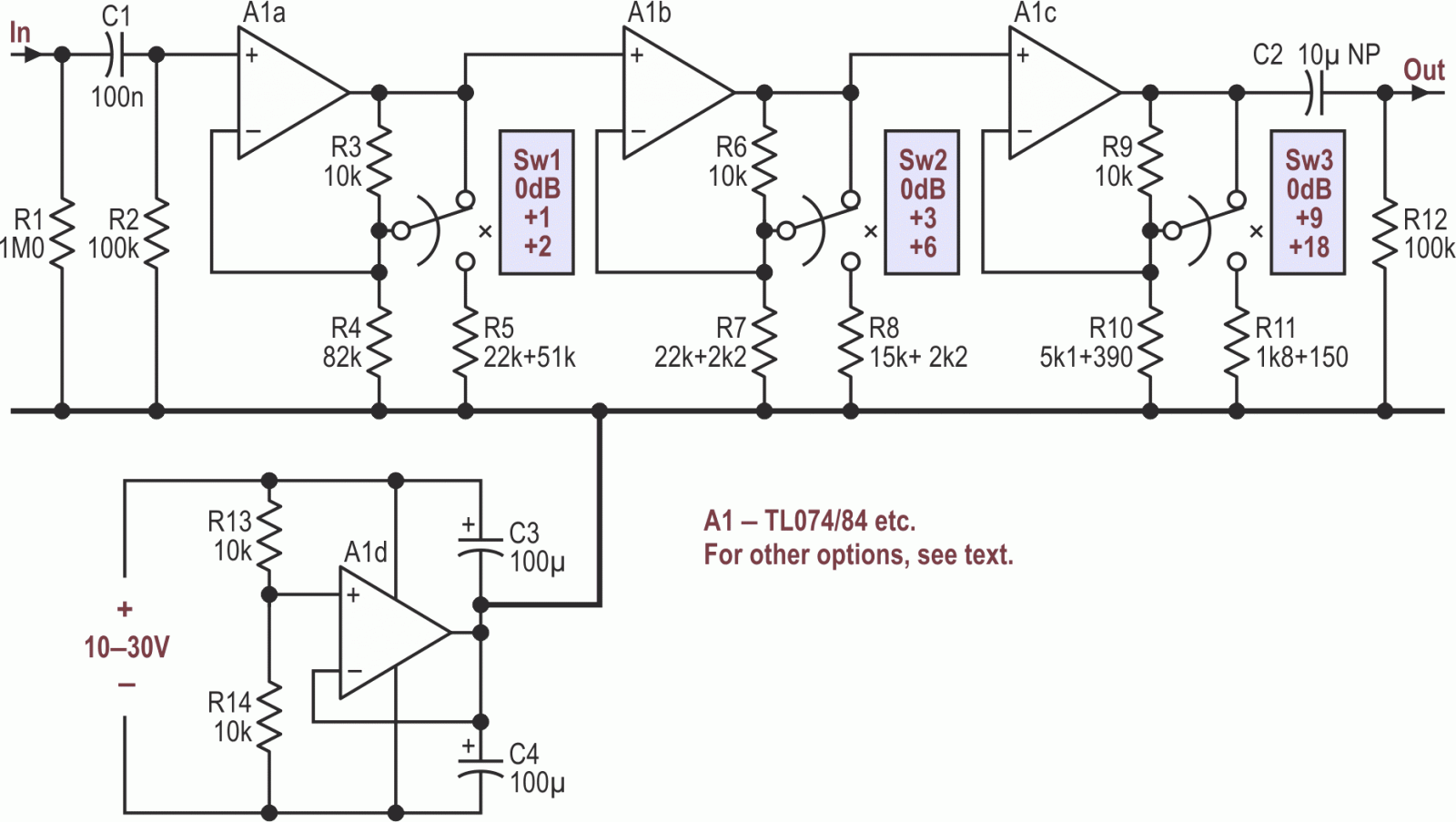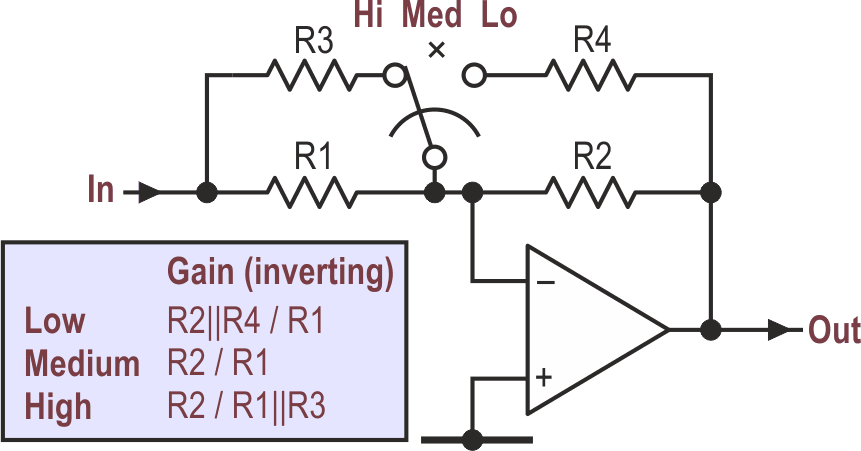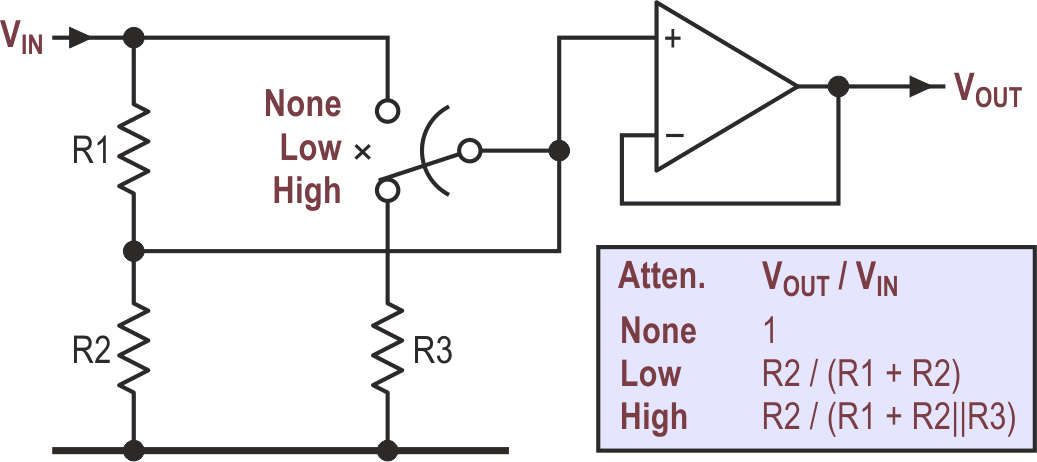This design idea is centered on the humble on/off/on toggle switch, which is great for selecting something/nothing/something else, but can be frustrating when three active options are needed. One possibility is to use the contacts to connect extra, parallel resistors across a permanent one (for example), but the effect is something like low/high/medium, which just looks wrong.
That word “active” is the clue to making the otherwise idle center position do some proper work, like helping to control an op-amp stage’s gain, as shown in Figure 1.
 |
|
| Figure 1. | An on/off/on switch gives three gain settings in a non-inverting amplifier stage and does so in a rational order. |
I’ve used this principle many times, but can’t recall having seen it in published circuits, and think it’s novel, though it may be so commonplace as to be invisible. It’s certainly obvious when you think about it.
A practical application
That’s the basic idea, but it’s always more satisfying to convert such ideas into something useful. Figure 2 illustrates just that: an audio gain-box whose amplification is switched in a ternary sequence to give precise 1-dB steps from 0 to +26 dBs. As built, it makes a useful bit of lab kit.
 |
|
| Figure 2. | Ternary switching over three stages gives 0–26 dB gain in precise 1-dB steps. |
Three gain stages are concatenated, each having its own switch. C1 and C2 isolate any DC, and R1 and R12 are “anti-click” resistors, ensuring that there’s no stray voltage on the input or output when something gets plugged in. A1d is the usual rail-splitter, allowing use on a single, isolated supply.
The op-amps are shown as common-or-garden TL074/084s. For lower noise and distortion, (a pair of) LM4562s would be better, though they take a lot more current. With a 5-V supply, the MCP6024 is a good choice. For stereo use, just duplicate almost everything and use double-pole switches.
All resistor values are E12/24 for convenience. The resistor combinations shown are much closer to the ideal, calculated values than the assumed 1% tolerance of actual parts, and give a better match than E96s would in the same positions.
Other variations on the theme
The circuit of Figure 2 could also be built for DC use but would then need low-offset op-amps, especially in the last stage. (Omit C1, C2, and other I/O oddments, obviously.)
Figure 1 showed the non-inverting version, and Figure 3 now employs the idea in an inverting configuration. Beware of noise pick-up at the virtual-earth point, the op-amp’s inverting input.
 |
|
| Figure 3. | An inverting amplifier stage using the same switching principle. |
The same scheme can also be used to make an attenuator, and a basic stage is sketched in Figure 4. Its input resistance changes depending on the switch setting, so an input buffer is probably necessary; buffering between stages and of the output certainly is.
 |
|
| Figure 4. | A single attenuation stage with three switchable levels. |
Conclusion: back to binary basics
You’ve probably been wondering, “What’s wrong with binary switching?” Not a lot, except that it uses more op-amps and more switches while being rather obvious and hence less fun.
 |
|
| Figure 5. | Binary switching of gain from 0 to +31 dB, using power-of-2 steps. Again, the theoretical resistor values are much closer to the ideal than their actual 1% tolerances. |
Anyway, here (Figure 5) is a good basic circuit to do just that.